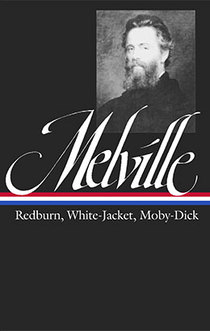skip to main
|
skip to sidebar
دنبال کننده ها
بايگانی وبلاگ
-
▼
2024
(3596)
-
▼
اوت
(317)
- مسعود پزشکیان میگوید ایران به بیش از ۱۰۰ میلیارد...
- ادامه انتقادها از عارف برای بردن پسرش به مراسم دو...
- محمدعلی بهمنی درگذشت؛ «رودخونهها رودخونهها منم...
- انجمن زمینشناسی لندن (به انگلیسی
- The Zeuglodon Zeuglodons at sea. (Copyright Lee K...
- Basilosaurus (meaning "king lizard") is a genus o...
- محمّدعلی بهمنی (۲۷ فروردین ۱۳۲۱ – ۹ شهریور ۱۴۰۳)
- دراین زمانهٔ بیهای و هوی لالپرستخوشا به حال کلاغ...
- محمدعلی بهمنی شاعر و ترانهسرای ایرانی درگذشتمحمد...
- سیاستاسرائیلمشاجره بین نتانیاهو و گالانت در کابین...
- fa | fr |
- fa | fr |
- fa | fr |
- fa | fr |
- Mongolia, Tov province, Gengis Khan monument. © ...
- 30 Aug, 2024 17:15HomeRussia & FSUUkrainian milit...
- مطبوعات ایران بایدتابع تیراژ و آگهی شوند!مطبوعات ...
- PALEOAERIEARKANSAS EDUCATIONAL RESOURCE INITIATIV...
- CHASING FLUKESA students' guide to reading Moby-Dick
- رنو دوفین (Renault Dauphine) خودرویی است که در سا...
- The state's name is derived from the Mississippi ...
- دوره چند کارگی خویش: فهرست مشاغلی که اسماعیل در «...
- The Online Books PageOnline Books byRobert Southe...
- سیاستایرانرهنورد: وفاق ملی با �
- هشدار رسانههای جهان عرب درباره «انتفاضه سوم» در ...
- چرا روابط ترکیه و جمهوری آذربایجان سرد شد؟
- جوزپ بورل از اتحادیه اروپا خواست تحریم برخی وزیرا...
- ماستودون: Mastodonنام چندین گونه منقرضشده از راس...
- مرتضی پاشایی (۲۰ مرداد ۱۳۶۳ – ۲۳ آبان ۱۳۹۳) خوانن...
- سیاستآلماندیدار شولتس و استار�
- قَـلَـم پَـر (به انگلیسی: Quill) سادهترین و از ق...
- لوازم تحریر به زبان فرانسه، لیست اسامی و اصطلاحات...
- روزنامه شهروند1403/06/08
- روزنامه خراسان1403/06/08
- دادستان تهران علیه باران کوثری و رخشان بنیاعتماد...
- غلامرضا افخمی (۱۳۱۴ تهران
- میراث غلامرضا افخمی؛ «زندگی و زمانه شاه» و «تاریخ...
- تجمع اعتراضی در تهران به دلیل گیر ماندن «صدها کا...
- قاموس. (ا. یو.) (از یونانی ὠκεανός (ōkeanós).اقی...
- چرا پاول دوروف، بنیانگذار تلگرام، قبل از بازداشت...
- قاموس اللغه یا
- برغوثی . [ ب َ ] (اِ) بیونانی بزرقطونا. (تحفه ٔ ح...
- ظاهرا نوشتن برایش راحت تر از گفتن استگزارش پزشکیا...
- فاطمه مهاجرانی؛ نخستین زنی که سخنگوی دولت در ایرا...
- مهدی کروبی در واکنش به «تلاش پزشکیان و اژهای برا...
- رَبِّ اشْرَحْ لِي صَدْرِي وَيَسِّرْ لِي أَمْرِ...
- پیک نت - Pyknet, [8/27/2024 1:32 PM]پیک نت - Pykn...
- حیران نام منطقه ای است ییلاق�
- تورم در ایران تا آخر سال چقدر میشود؟
- علت نامگذاری محله سیدخندان تهران چیست؟قصه برخی از...
- سیاستایراناظهارات خامنهای د�
- سیاستخاورمیانه
- سفر سولیوان به پکن؛ چین و شی جینپینگ هنوز برای ب...
- روزنامه اعتماد1403/06/06
- استا محمد رضا شفیعی کدکنی
- رضا قطبی، آخرین رئیس رادیو تلویزیون ملی ایران درگذشت
- صفحه اولجنگ اسرائیل-غزه
- گز. [ گ َ ] (اِ) کردی قز ۞ (مقیاس طول ، اندازه ) م...
- فضای کسبوکار آلمان بحرانی شدانقباض فضای کسبوکار...
- 27 Aug, 2024 10:12HomeWorld NewsKiev should expla...
- حملات گسترده موشکی و پهپادی روسیه به اوکراین در د...
- شناس یا ناشناس، مسئله این بید!
- سیاستایرانباقری: انتقام ایران
- پیک نت - Pyknet, [8/26/2024 1:01 PM]پیک نت - Pykn...
- روزنامه شهروند1403/06/06
- سیاستایرانانجمن اسلامی دانشگا
- 26 Aug, 2024 19:24HomeBusiness NewsIsrael stalls ...
- پنتاگون: خطر حمله ایران و متحدانش به اسرائیل پابر...
- در یکی از گستردهترین حملات شبهنظامیان در بلوچست...
- عبدالکریم حسینزاده، نماینده کرد و اهل سنت مجلس، ...
- پیک نت - Pyknet, [8/26/2024 1:10 PM]پیک نت - Pykn...
- خبرگزاری مهر | اخبار ایران و جهان | Mehr News Age...
- سیاستایالات متحده آمریکاهریس نیم میلیارد دلار برا...
- پیک نت - Pyknet, [8/25/2024 11:16 AM]پیک نت - Pyk...
- اندیشکده آمریکایی بررسی کردهمکاری و رقابت روسیه، ...
- BBC News, فارسیمشاهده محتوا
- العربية English françaisتغییر رنگ دریاچه ارومیه تو...
- BBC News, فارسیمشاهده محتواصفحه هاصفحه اولجنگ اسرا...
- پیشخوان روزنامههای ایرانروزنامه تجارت1403/06/03گا...
- دانلود اپلیکیشن اندرویدنصبdate-time شنبه 3 شهریور ...
- BBC News, فارسیمشاهده محتواصفحه هاصفحه اولجنگ اسرا...
- گیشه. (ا. از فرانسه guichet). باجه، دریچه. بلیط فر...
- بازخوانی تصنیف «ای بهار من»
- دولت بایدن مجدداً تحریمهای آمریکا علیه صدا و سیم...
- رضایی: بنا بر جنگ نیست، پاسخ به اسرائیل حسابشده ...
- فصل یکصد و سوم اندازه گیری اسکلت وال
- 21 Aug, 2024 20:38HomeWorld NewsCause of Iranian ...
- دیمیری مدودف:جانسونِ بیسیرت با آن موهای ژولیده، ...
- U.S. NEWSObama roasts Trump, and other highlights...
- 21 Aug, 2024 15:11HomeRussia & FSUHere’s why Puti...
- طرح آتشبس آمریکا برای غزه چیست؟
- گاندی . (اِخ ) پیشوای هندوان و موجد استقلال هندوس...
- نام طایفه ای بزرگ از ایل طیبی گرمسیری در استان که...
- مهرداد اولادی: ...
- بررسی وزرای پیشنهادی پزشکیان در مجلس ایران: پنج ن...
-
▼
اوت
(317)

